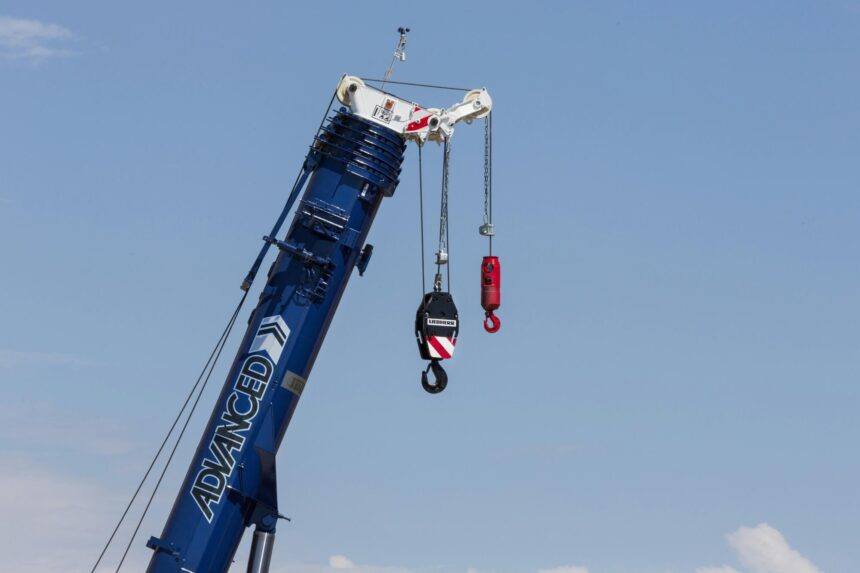In any job that uses rigging equipment, safety should always come first. One small mistake can cause big problems-injuries, damage, or worse. That’s why it’s so important to follow the right steps, use the right tools, and make sure everyone knows how to handle the gear safely.
From checking weight limits to doing regular inspections, every detail matters. With the right knowledge and habits, rigging work becomes safer and more reliable.
Continue reading to discover the key practices that protect both people and equipment at every job site.
Understanding Rigging Equipment
Rigging equipment includes a range of tools that help lift and move heavy objects safely. These tools like slings, hoists, shackles, and pulleys each play a specific role in the lifting process. Choosing the right tool for the job improves both safety and efficiency on-site.
Slings hold the load during lifting and come in different materials such as synthetic webbing, chain, and wire rope. Hoists lift and lower loads using gears or chains to provide a mechanical advantage. Shackles connect loads to lifting devices, while pulleys redirect force and allow more controlled movement.
Each tool has a maximum load it can safely handle, known as the load rating. Using equipment beyond its limit can cause it to break, risking injury or damage. That’s why knowing and following the specifications is critical for every lift.
Conducting Regular Inspections
One of the key steps in using rigging equipment safely is performing regular inspections. Gear that’s used every day or exposed to rough conditions wears out faster and needs more frequent checks. ANSI recommends keeping a service record and following a set inspection schedule for each tool.
During inspections, check for common damage like fraying or cracking in slings. Look for dents, warping, or other signs of stress in metal parts such as shackles and hooks. Corrosion is another warning sign, as it can weaken the equipment and lead to sudden failure.
If any item shows damage, it should be clearly tagged and taken out of use right away. Ignoring these issues can lead to dangerous accidents on the job. Sticking to inspection guidelines helps ensure every lift is done with strong, reliable gear.
Secure Handling of Rigging Equipment
How rigging equipment is handled plays a major role in job site safety. Poor handling can damage the gear and put workers at risk. Employing proper methods to lift, move, and store equipment effectively prevents accidents and injuries.
When lifting heavy equipment, always bend at the knees and utilize your legs instead of your back. Never try to move more weight than the gear is rated for, as this can cause it to fail. Knowing these limits is essential when working with heavy loads; click for premium safety harnesses for rigging.
Storage also matters. Keep rigging gear in a clean, dry area, away from moisture, dirt, and extreme temperatures. Equipment should be placed in a secure spot, away from people who aren’t trained to use it.
Weight Limits and Load Calculations
Every piece of rigging gear is built to handle a specific weight, known as its load limit. Ignoring these limits can cause the gear to break, leading to dropped loads or serious injuries. If a sling is rated for 5,000 pounds, using it beyond this rating is dangerous regardless of how many slings are utilized. Each sling should not exceed its individual load limit.
Before lifting anything, it’s important to run proper load calculations. Start by knowing the exact weight of what you’re lifting. Then, think about how the weight is spread out, since uneven loads can tip or strain equipment.
Also consider dynamic forces like swinging, wind, or sudden stops, which can increase the stress on the gear. These extra forces can push the load beyond safe limits. Taking time to calculate all factors helps avoid overloading and keeps the job site safe.
Employee Training and Education
Training is one of the most important parts of staying safe in rigging operations. Workers need to know how to use the equipment the right way and follow current safety rules. Holding regular training sessions helps keep everyone sharp and up to date.
Training should cover how to recognize different rigging tools and understand what each one is used for. It should also teach workers how to spot damage during inspections and how to handle loads without causing harm. These skills reduce the chances of accidents on the job.
Encouraging open communication during and after training also makes a difference. When workers feel safe sharing concerns or asking questions, safety improves for everyone. A strong safety culture leads to better choices and safer rigging practices every day.
Emergency Preparedness
Even with strong safety measures in place, accidents can still occur. That’s why being prepared for emergencies is just as important as preventing them. A clear emergency response plan helps guide everyone through the right steps when something goes wrong.
The plan should explain how to safely evacuate the area, who to call, and how to give first aid if needed. All team members should know where to locate emergency contacts and receive training in basic first aid and CPR. When everyone knows what to do, they can respond quickly and safely in any emergency.
Choosing Quality Rigging Equipment
Selecting high-quality rigging equipment is vital for maintaining safety on the job site. Cheap or poorly made gear is more likely to break, which can lead to accidents or even serious injuries. That’s why it’s important to buy from trusted suppliers who follow strict safety standards.
When picking rigging gear, always check for certification from groups like ANSI or OSHA. Make sure the materials are strong enough to handle the job, and only buy from brands known for safety and reliability. Using the right equipment not only keeps workers safe but also helps the job run more smoothly.
Make Safety a Daily Habit
Prioritizing safety in rigging equipment enhances both job site safety and efficiency. Regular checks, proper use, and solid training all work together to protect your team and your gear. Choosing quality tools and keeping safety top of mind can make a big difference every day.
Start building a safer workplace by using trusted gear and giving your crew the right support. Explore our top-rated safety harnesses built for heavy lifting and reliable performance.
For more tips and tools, check out the rest of our blog.















